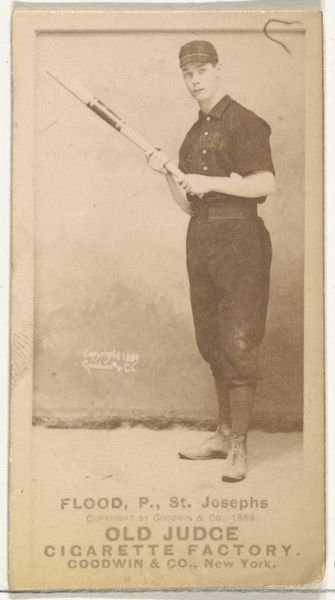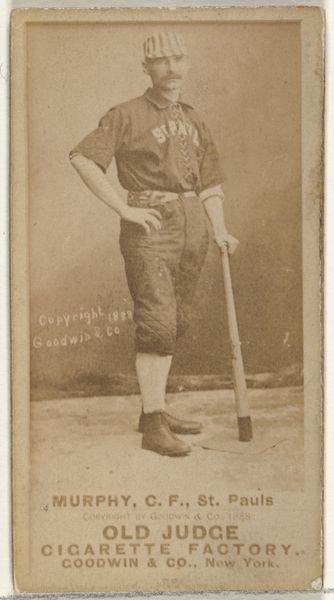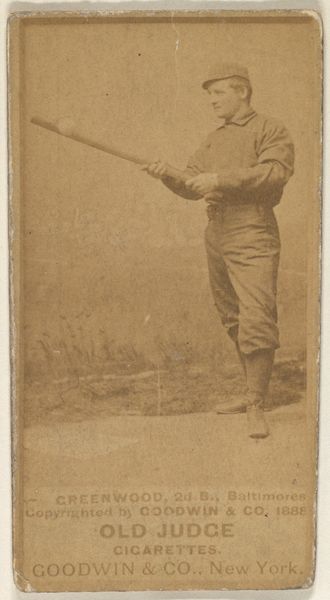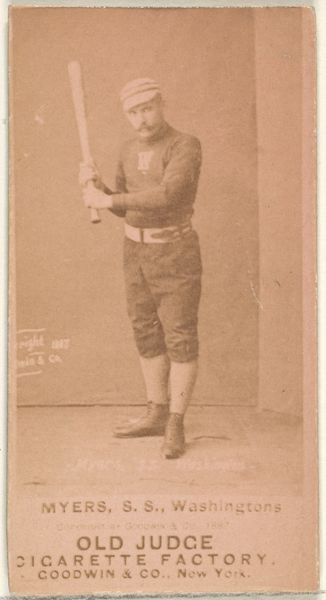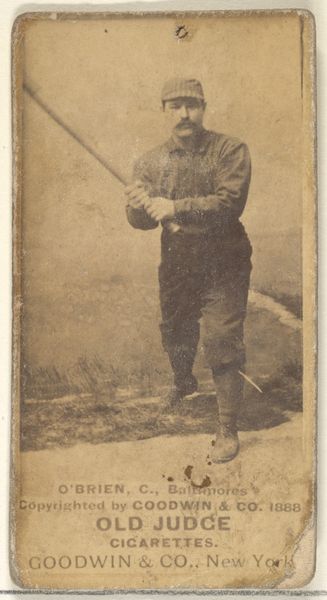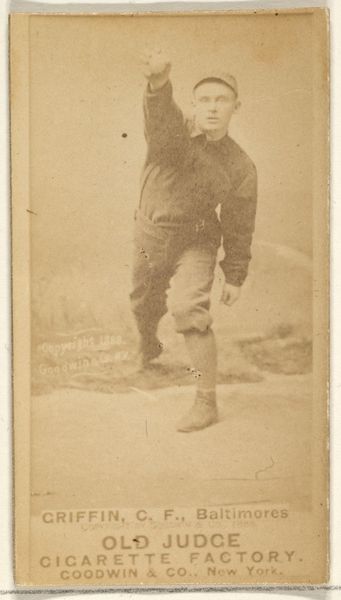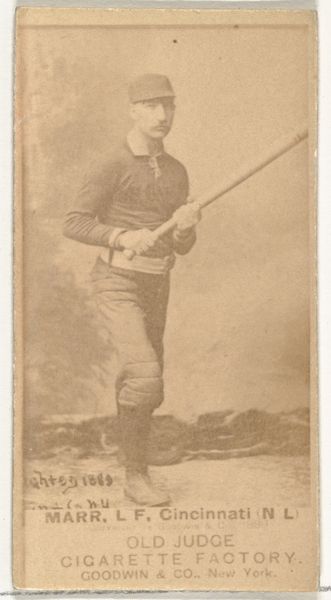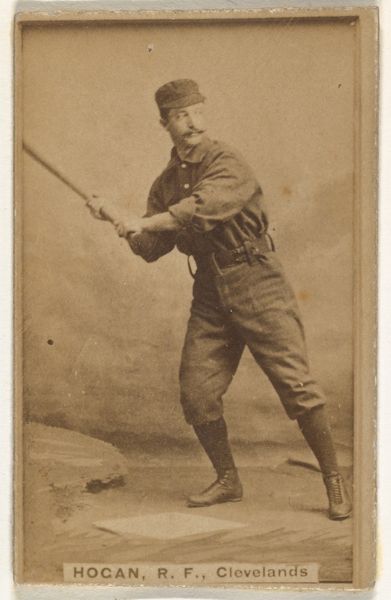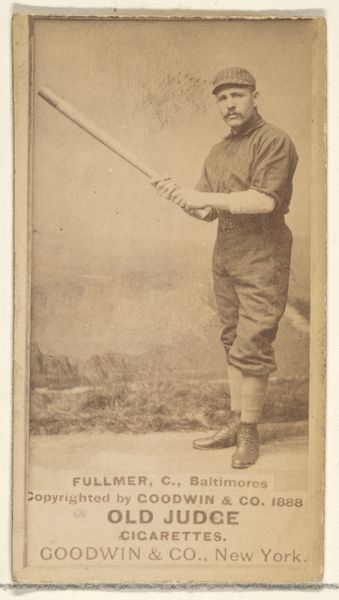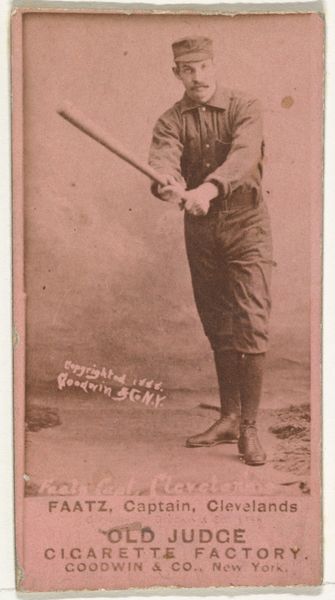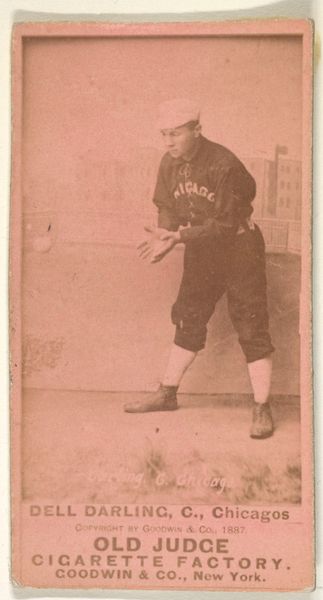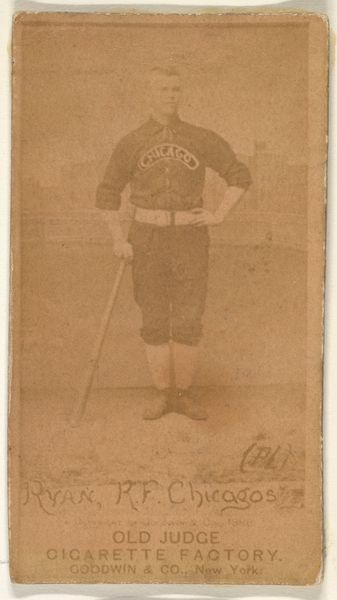
Ervin Duane "Jim" Curtiss, Right Field, St. Joseph Clay Eaters, from the Old Judge series (N172) for Old Judge Cigarettes 1889
0:00
0:00
drawing, print, photography
#
portrait
#
drawing
# print
#
baseball
#
photography
#
men
#
athlete
Dimensions: sheet: 2 11/16 x 1 3/8 in. (6.9 x 3.5 cm)
Copyright: Public Domain
Curator: Here we have a fascinating artifact, a baseball card featuring Ervin Duane "Jim" Curtiss from 1889. It's part of the Old Judge series, produced by Goodwin & Company, known for their cigarette brands. Editor: It's incredible how this small photographic print evokes such a sense of nostalgia, isn't it? The sepia tones and slightly blurred image give it a unique aura. Curator: Absolutely. These cards weren’t just about baseball; they offer insights into the late 19th-century's popular culture and the burgeoning commercialization of sports. It reveals not just Curtiss as an athlete, but the era's values associated with athleticism. Editor: Note the stark contrast between the dark uniform and light background, effectively isolates the figure. The subject is almost caught mid-motion with that tilted gaze that draws our attention to his firm grip on the bat and evokes ideas about focus and force. Curator: Exactly. And consider the Old Judge Cigarette Factory branding. Tobacco companies strategically aligned themselves with sporting heroes, tapping into aspirational ideals of strength and success, especially appealing to a working-class male audience. Editor: Interesting how the very structure of commercial branding can be used to propagate narratives of national pride and even idealized masculinities. However, I wonder if we can look at it less analytically? What feelings do we derive from viewing this piece? Curator: This makes me think about baseball as a distinctly American construct, intimately entwined with capitalism, commodification of sports, gender roles, and mass advertising, that makes it a complex and problematic part of U.S. history. Editor: Still, regardless of social factors, it manages to stir some feelings that connect to more profound aesthetic or emotional responses such as admiration, a sense of yearning for another place and time, a meditation on time. It's a unique paradox. Curator: I see your point. Looking at this piece offers me a different perspective on the concept of cultural memory as it reminds us how advertising shaped and reflected societal attitudes towards sport and consumerism. Editor: Yes, a unique dialogue indeed! We come away from this baseball card now reflecting more about cultural significance and art appreciation itself than a game.
Comments
No comments
Be the first to comment and join the conversation on the ultimate creative platform.
